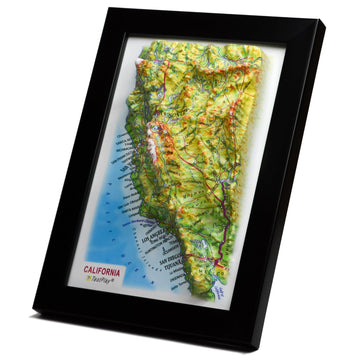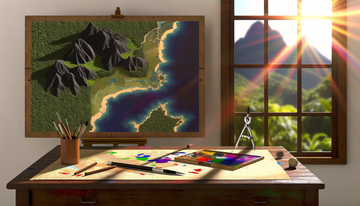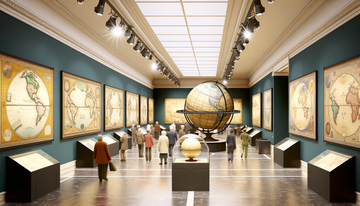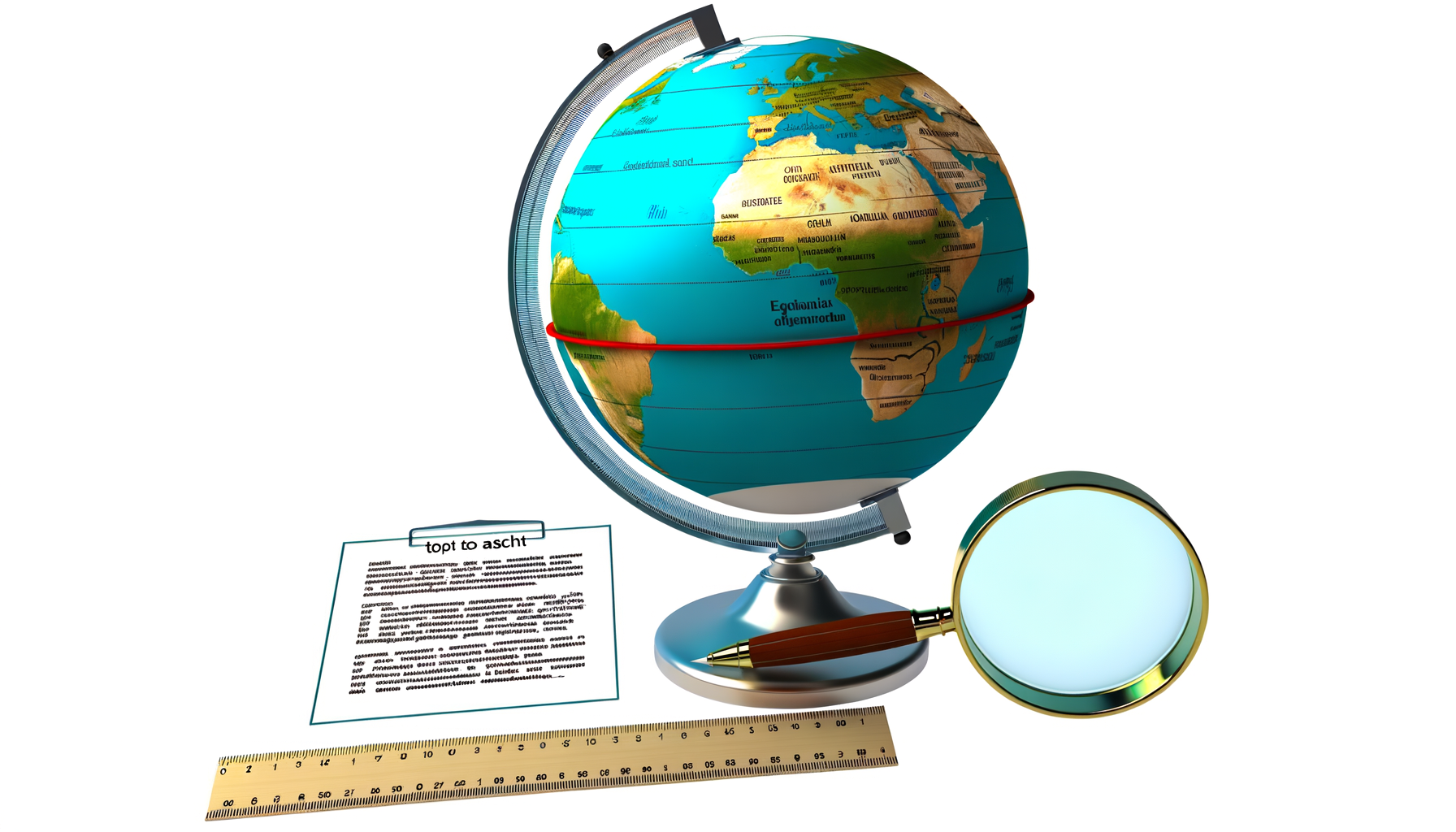Top Features to Look For in Educational Globes: A Comprehensive Guide for Learning
In an age dominated by digital screens, the humble educational globe might seem like a relic of the past. However, its enduring value as a tactile, three-dimensional representation of Earth is undeniable for learners of all ages.
Choosing the right globe, though, can be more complex than it appears, given the wide range of options available today. From traditional physical and political maps to advanced models featuring augmented reality and electronic pens, the features vary significantly and impact the learning experience.
This comprehensive guide is designed to help you navigate the choices, identifying the essential characteristics and exciting innovations that make an educational globe a truly effective learning tool. We will explore foundational aspects like accuracy, size, and durability, delve into different cartographic presentations, and highlight the cutting-edge interactive features that are revolutionizing how we explore our planet.
By understanding these key features, you will be equipped to select a globe that not only looks good but also provides lasting educational value, offering a tangible connection to geography that digital tools alone cannot replicate. Let's embark on this journey to discover what makes an educational globe stand out.
Why a Globe Still Matters in the Digital Age
While online maps and virtual tours offer incredible convenience and detail, they typically present the Earth as a flat, two-dimensional image. This can make it challenging, especially for younger learners, to grasp the true spherical nature of our planet, understand concepts like distortion on flat maps, or visualize relative distances and positions on a global scale.
A physical globe provides an immediate, intuitive understanding of the Earth's form and the relationship between different locations. It allows users to literally turn the world in their hands, facilitating a spatial understanding that is fundamental to geography and earth science.
Furthermore, the tactile experience of interacting with a globe can enhance memory and engagement, offering a different pathway to learning than purely digital interaction. It serves as a constant, accessible reference point in a classroom or home, ready to be consulted without needing to boot up a device or connect to the internet.
Foundational Features: The Essentials
Before exploring advanced functionalities, it is crucial to assess the basic attributes that determine a globe's quality and usefulness. These foundational features ensure the globe is a reliable and durable educational resource.
Accuracy and Cartographic Detail
The primary function of an educational globe is to represent the Earth accurately. This involves not just the correct placement of continents and oceans but also the depiction of political boundaries, cities, rivers, mountains, and other geographical features.
Look for globes with up-to-date political information, including country names, capitals, and borders, although keep in mind that political boundaries can change over time, so absolute perfect currency can be challenging for physical models. For physical geography, check for clear labeling of major mountain ranges, rivers, lakes, and deserts.
Detailed coastlines and islands are also important for precise geographical understanding. The quality and resolution of the printing play a significant role in how readable and informative these details are.
A highly detailed globe will offer more learning opportunities and remain relevant longer, assuming its core geographical data is sound. Ensuring the scale and proportions are accurate across the globe is also paramount.
Scale and Size
The size of a globe, usually indicated by its diameter, directly impacts the level of detail it can display and its practicality for different settings. Larger globes (12 inches diameter or more) generally offer greater detail and are easier to read, making them excellent for classrooms or dedicated study areas.
Smaller globes (6-8 inches diameter) are more portable and require less space, suitable for smaller desks or as a personal reference tool. However, they may sacrifice some geographical detail due to the reduced surface area.
Consider where the globe will be used and by whom when deciding on size. A classroom with multiple students needing to view it might benefit from a larger globe, while a child's bedroom desk might be better suited for a medium or small size.
Durability and Construction
An educational globe, especially one used by children, needs to be robust. The materials used for the globe ball, the stand, and the meridian (the half-circle arc that the globe typically tilts on) are key indicators of durability.
The globe ball itself is often made of sturdy plastic or composite materials. The stand can be plastic, wood, or metal, with metal generally offering the greatest stability and longevity. The connection points between the globe and the meridian, and the meridian and the stand, should feel secure and allow the globe to rotate smoothly without wobbling.
A well-constructed globe can withstand regular handling and last for many years, making it a worthwhile investment in a child's education. Check for reviews regarding the sturdiness of the base and the quality of the materials used.
Cartographic Presentation: Seeing the World Differently
Globes aren't just spheres with maps; they can present geographical information in various ways, each offering unique learning insights.
Physical vs. Political Mapping
Educational globes typically display either physical or political maps, or sometimes both (often on illuminated globes or models that can be switched). Political maps show countries, states, major cities, and national borders, emphasizing human-defined divisions.
Physical maps depict natural features such as continents, oceans, mountain ranges, deserts, and plains, often using color variations to show elevation and depth. Understanding both perspectives is crucial for a complete geographical education.
Consider which type of mapping is most relevant to the primary learning goal. For studying countries and capitals, a political map is essential. For learning about landforms and topography, a physical map is more useful.
Illuminated Globes
Illuminated globes contain a light source inside the sphere, allowing them to function as a lamp and often revealing a second map when lit. A common configuration is a political map when unlit and a physical or atmospheric map when lit.
This dual functionality adds versatility and visual appeal. The illumination can highlight geographical features or political boundaries and serves as an engaging way to view the world in different contexts.
Beyond practicality, the soft glow of an illuminated globe can create a calming and inspiring atmosphere in a room, making it not just an educational tool but also an attractive piece of decor.
Raised Relief
Globes with raised relief offer a tactile representation of topography. Mountain ranges and plateaus are physically raised on the surface of the globe, allowing users to feel the variations in elevation.
This feature significantly enhances the understanding of physical geography, making abstract concepts like mountain chains and valleys more concrete. Feeling the Andes or the Himalayas provides a different sensory input than simply seeing them on a flat map.
While impressive, raised relief is often exaggerated for effect on smaller globes due to scale limitations. However, it remains a valuable feature for conveying the general concept of the Earth's varied terrain.
Interactive and Advanced Features
The integration of technology has brought a new dimension to educational globes, transforming them into highly interactive learning hubs. These advanced features leverage digital capabilities to provide dynamic content and engaging learning experiences.
Augmented Reality (AR) Integration
One of the most exciting recent innovations is the integration of augmented reality. Some modern globes come with accompanying smartphone or tablet apps that, when pointed at the globe, overlay digital information onto the physical sphere.
This AR content can include a vast array of information: animated animals native to specific regions, famous landmarks popping up as 3D models, real-time weather patterns, cultural information about different countries, geological facts, and even space objects.
AR features make learning incredibly visual, dynamic, and engaging, especially for tech-savvy students. It bridges the gap between the physical globe and the wealth of digital information available, offering layers of context that a static globe cannot provide alone.
When considering an AR globe, check the quality and breadth of the app's content, its ease of use, and whether the app is regularly updated with new information or features. Ensure compatibility with your devices.
Electronic Pens and Smart Globes
Another form of interactivity comes with electronic pens that can read invisible codes printed on the globe's surface. Touching the pen to a country, city, or ocean triggers audio responses.
These responses can include facts about the location, its capital city, population figures, currency, language spoken, national anthem, or even snippets of local music. Some pens offer information in multiple languages.
Smart pens turn the globe into an audio-visual learning tool, providing information instantly as the user explores. They make the learning process more active and personalized, allowing users to discover information at their own pace.
Consider the range of information the pen provides and the clarity of the audio. Some systems also include built-in speakers or headphone jacks for quiet study.
Built-in Quizzes and Games
Many interactive globes, particularly those with electronic pens or AR capabilities, include integrated educational games and quizzes. These features transform learning into play, helping users test their knowledge in a fun format.
Quizzes might ask users to locate countries, capitals, or landmarks. Games could involve trivia or challenges related to geography and world facts.
Gamification can be a powerful motivator for learning, making the process enjoyable and reinforcing information through active recall. This feature is particularly beneficial for engaging younger learners or making study sessions more interactive.
Digital Connectivity and Updates
Some advanced interactive globes can connect to the internet, often via the accompanying app or a direct connection. This connectivity allows for potential updates to the globe's digital content, ensuring the information remains current.
While political boundaries on the physical globe cannot change, digital overlays through AR or facts delivered via an electronic pen can be updated to reflect new information, discoveries, or political shifts.
The ability to receive updates adds long-term value, keeping the interactive content fresh and relevant over time. Check how updates are delivered and how frequently they are typically provided.
User Experience and Educational Value
Beyond the specific features, how easy and effective the globe is to use for learning is paramount.
Age Appropriateness
The best educational globe is one that is suited to the age and learning level of its primary user. For very young children, a globe with simplified political divisions, large text, and perhaps interactive elements focused on animals or simple facts is ideal.
Older children and students may benefit from more detailed maps showing subtle geographical features, ocean currents, or tectonic plates. Interactive features can also vary in complexity.
Consider the target age range specified by the manufacturer and assess if the level of detail, complexity of interactive features, and overall design align with the user's abilities and learning needs. A globe that is too complex can be overwhelming, while one that is too simple may quickly lose its educational value.
Readability of Text
Regardless of age, the text labels on the globe must be clear and easy to read. This depends on the font size, font style, and the contrast between the text and the background map colors.
Small, cluttered text or poor color choices can make it difficult to locate and identify places, frustrating the user and hindering the learning process. Good readability ensures that information is accessible at a glance.
Ease of Use
A good educational globe should be easy to handle and spin. The stand should be stable, allowing the globe to rotate smoothly on its axis without resistance or tipping over. The meridian should be clearly marked with degrees of latitude.
If the globe has interactive features, the accompanying app should be intuitive to use, or the electronic pen responsive and simple to operate. The goal is seamless interaction that facilitates learning, not complicates it.
Choosing the Right Globe for Your Needs
With such a variety of features available, selecting the perfect educational globe requires considering a few key factors specific to your situation.
First, determine your budget. Basic globes are affordable, while advanced interactive models with AR or electronic pens can be a significant investment. Knowing your price range will help narrow down options.
Second, identify the primary user's age and learning goals. Is it for a young child learning continents, or an older student studying complex physical geography or current events? This will guide your choice of complexity, detail level, and necessary features.
Third, consider the space available. Larger globes offer more detail but require more room. Think about where the globe will be placed and how much space you can allocate.
Finally, read reviews and compare specific models. Look for feedback on accuracy, durability, the quality of interactive features (if applicable), and overall user satisfaction.
Conclusion
Educational globes remain invaluable tools for understanding our world in a way that flat maps cannot fully replicate. They offer a unique, tactile, and visual method for exploring geography, fostering spatial reasoning and global awareness.
From essential features like accurate mapping and sturdy construction to exciting innovations like augmented reality and electronic pens, the range of options available today allows you to choose a globe perfectly tailored to specific learning needs and interests.
By carefully considering the features outlined in this guide – accuracy, size, durability, cartographic style, and interactive elements – you can invest in a globe that will not only serve as a powerful educational resource but also inspire curiosity and a lifelong fascination with the planet we call home. Choose wisely, and give the gift of the world.




